12 books about Clements, Jonathan
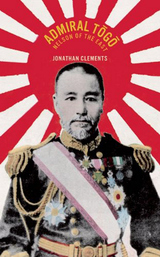
Admiral Togo
Nelson of the East
Jonathan Clements
Haus Publishing, 2010
Togo Heihachiro (1848-1934) was born into a feudal society that had lived in seclusion for 250 years. As a teenage samurai, he witnessed the destruction wrought upon his native land by British warships. As the legendary "Silent Admiral", he was at the forefront of innovations in warfare, pioneering the Japanese use of modern gunnery and wireless communication. He is best known as "the Nelson of the East" for his resounding victory over the Tsar's navy in the Russo-Japanese War, but he also lived a remarkable life: studying at a British maritime college, witnessing the Sino-French War, the Hawaiian Revolution, and the Boxer Uprising. After his retirement, he was appointed to oversee the education of the Emperor, Hirohito. This new biography spans Japan's sudden, violent leap out of its self-imposed isolation and into the 20th century. Delving beyond Togo's finest hour at the Battle of Tsushima, it portrays the life of a diffident Japanese sailor in Victorian Britain, his reluctant celebrity in America (where he was laid low by Boston cooking and welcomed by his biggest fan, Theodore Roosevelt), forgotten wars over the short-lived Republics of Ezo and Formosa, and the accumulation of peacetime experience that forged a wartime hero.
[more]
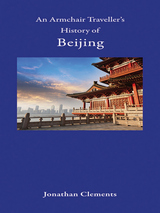
An Armchair Traveller's History of Beijing
Jonathan Clements
Haus Publishing, 2016
As China’s global influence continues to rise, its capital, Beijing, has become increasingly important—and a popular tourist destination, greeting close to five million international visitors each year. An Armchair Traveller’s History of Beijing presents the capital from its earliest beginnings as a prehistoric campsite for Peking Man through its fluctuating fortunes under a dozen dynasties.
Home to capitals of several states over time, the site of modern Beijing has been ruled by Mongolian chiefs and the glorious Ming emperors, whose tombs can still be found on its outskirts. Through Beijing, we can experience Chinese history itself, including its more famous residents—including Khubilai Khan, Mulan, and Marco Polo. Special emphasis is placed on Beijing’s precarious heritage in the twenty-first century, as modern construction wipes out much of the old city to make way for homes for twenty million people.
This book also offers detailed information on sites of tourist interest, including the pros and cons of different sections of the Great Wall and the best ways to see the Forbidden City and the fast-disappearing relics of the city’s Manchu and Maoist eras. A chapter on food and drink examines not only local delicacies, but the many other Chinese dishes that form part of Beijing’s rich dining traditions. With its blend of rich history and expert tips, An Armchair Traveller’s History of Beijing is an essential introduction to one of the world’s most remarkable cities.
Home to capitals of several states over time, the site of modern Beijing has been ruled by Mongolian chiefs and the glorious Ming emperors, whose tombs can still be found on its outskirts. Through Beijing, we can experience Chinese history itself, including its more famous residents—including Khubilai Khan, Mulan, and Marco Polo. Special emphasis is placed on Beijing’s precarious heritage in the twenty-first century, as modern construction wipes out much of the old city to make way for homes for twenty million people.
This book also offers detailed information on sites of tourist interest, including the pros and cons of different sections of the Great Wall and the best ways to see the Forbidden City and the fast-disappearing relics of the city’s Manchu and Maoist eras. A chapter on food and drink examines not only local delicacies, but the many other Chinese dishes that form part of Beijing’s rich dining traditions. With its blend of rich history and expert tips, An Armchair Traveller’s History of Beijing is an essential introduction to one of the world’s most remarkable cities.
[more]

An Armchair Traveller's History of Finland
Jonathan Clements
Haus Publishing, 2014
In the American mind, Finland is often swept up in the general group of Nordic countries, little known and seldom gaining prominence on its own. But as Jonathan Clements shows in An Armchair Traveller’s History of Finland, it has a long and fascinating history, one that offers oddities and excitements galore: from prehistoric herders to medieval lords, Christian martyrs and Viking kings, and the war heroes who held off the Soviet Union against long odds.
Clements travels the length of the country as he tells these stories, along the way offering accounts of Finland’s public artworks, literary giants, legends and folktales, and famous figures. The result is the perfect introduction to Finland for armchair and actual travelers alike.
Clements travels the length of the country as he tells these stories, along the way offering accounts of Finland’s public artworks, literary giants, legends and folktales, and famous figures. The result is the perfect introduction to Finland for armchair and actual travelers alike.
[more]

An Armchair Traveller's History of Tokyo
Jonathan Clements
Haus Publishing, 2018
With almost 13 million residents, Tokyo is now as much an icon of modernity as it is a city, with its neon-lit billboards, futuristic technology, and avant-garde fashion scene. But the long and fascinating history of Japan’s modern capital encompasses much, much more, and in An Armchair Traveller’s History of Tokyo, Jonathan Clements sketches the city’s amazing trajectory from its humble beginnings as a group of clearings in a forest on the Kanto plain all the way to its upcoming role as host of the 2020 Olympic Games.
Tokyo, meaning “Eastern Capital,” has only enjoyed that name and status for 150 years. Before that, it was a medieval outpost designed to keep watch over rich farmlands. But this seemingly unassuming geographical location ultimately led to its status as a supercity. Though the imperial court ruled Japan from the sleepy city of Kyoto, the landowners of the Kanto plain where Tokyo lies held the true wealth and power in Japan, which they eventually asserted in a series of bloody civil wars. The Tokyo region became the administrative center of Japan’s Shogun overlords and the site of a vibrant urban culture home to theaters, taverns, and brothels. After the Meiji Restoration in 1868, it became Japan’s true capital, home to the emperors, the seat of government, and a site of rapid urban growth.
Anyone who’s ever longed to look upon Mount Fuji, embody the bravery of the Samurai, or savor the world’s finest sushi will find themselves transported from the comfort of their armchair while reading Clements’s account of Tokyo.
Tokyo, meaning “Eastern Capital,” has only enjoyed that name and status for 150 years. Before that, it was a medieval outpost designed to keep watch over rich farmlands. But this seemingly unassuming geographical location ultimately led to its status as a supercity. Though the imperial court ruled Japan from the sleepy city of Kyoto, the landowners of the Kanto plain where Tokyo lies held the true wealth and power in Japan, which they eventually asserted in a series of bloody civil wars. The Tokyo region became the administrative center of Japan’s Shogun overlords and the site of a vibrant urban culture home to theaters, taverns, and brothels. After the Meiji Restoration in 1868, it became Japan’s true capital, home to the emperors, the seat of government, and a site of rapid urban growth.
Anyone who’s ever longed to look upon Mount Fuji, embody the bravery of the Samurai, or savor the world’s finest sushi will find themselves transported from the comfort of their armchair while reading Clements’s account of Tokyo.
[more]

A History of the Silk Road
Jonathan Clements
Haus Publishing, 2017
The Silk Road is not a place, but a journey, a route from the edges of the Mediterranean to the central plains of China, through high mountains and inhospitable deserts. For thousands of years its history has been a traveler’s history, of brief encounters in desert towns, snowbound passes and nameless forts. It was the conduit that first brought Buddhism, Christianity and Islam into China, and the site of much of the “Great Game” between 19th-century empires. Today, its central section encompasses several former Soviet republics, and the Chinese Autonomous Region of Xinjiang. The ancient trade route controversially crosses the sites of several forgotten kingdoms, buried in sand and only now revealing their secrets.
A History of the Silk Road not only offers the reader a chronological outline of the region’s development, but also provides an invaluable introduction to its languages, literature, and arts. It takes a comprehensive and illuminating look at the rich history of this dynamic and little known region, and provides an easy-to-use reference source. Jonathan Clements pays particular attention to the fascinating historical sites which feature on any visitor’s itinerary and also gives special emphasis to the writings and reactions of travelers through the centuries.
A History of the Silk Road not only offers the reader a chronological outline of the region’s development, but also provides an invaluable introduction to its languages, literature, and arts. It takes a comprehensive and illuminating look at the rich history of this dynamic and little known region, and provides an easy-to-use reference source. Jonathan Clements pays particular attention to the fascinating historical sites which feature on any visitor’s itinerary and also gives special emphasis to the writings and reactions of travelers through the centuries.
[more]
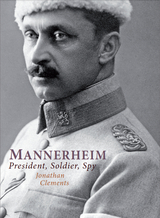
Mannerheim
President, Soldier, Spy
Jonathan Clements
Haus Publishing, 2012
Baron Gustaf Mannerheim was one of the greatest figures of the twentieth century, and the only man to be decorated by both sides in the Second World War. As a Finnish officer in Russian service, he witnessed the coronation of the last Tsar, and was both reprimanded for foolhardiness and decorated for bravery in the Russo-Japanese War. He spent two years undercover in Asia as an agent in the 'Great Game', posing as a Swedish anthropologist. He crossed China on horseback, stopping en route to teach the 13th Dalai Lama how to shoot with a pistol, and spying on the Japanese navy on his way home. He escaped the Bolsheviks by the skin of his teeth in 1917, arriving in the newly independent Finland just in time to lead the anti-Russian forces in the local revolt and civil war. During Finland's darkest hour, he lead the defence of his country against the impossible odds of the Winter War. This major new life of Gustaf Mannerheim, the first to be published for over a decade, includes new historical material on Mannerheim's time in China.
[more]

Marco Polo
Jonathan Clements
Haus Publishing, 2006
The records of the Chinese Yuan dynasty do not mention a Marco Polo at all (and they should), and there aer some suspicious omissions from Polo's text - no tea, no foot-binding, no mention of Chinese printing, or even of the Great Wall. Did Polo even go to China?
[more]
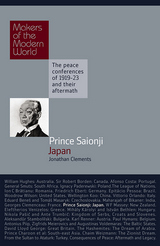
Prince Saionji
Japan
Jonathan Clements
Haus Publishing, 2010
Prince Saionji Kinmochi (1849-1940). The Japanese delegation at the Paris Peace Conference did not have the Japanese prime or foreign ministers with them as they had only just been elected and had plenty to do back home. The delegation was instead led by Prince Saionji, the dashing 'kingmaker' of early 20th-century Japanese politics whose life spanned the arrival of Commodore Perry and his 'black ships', the Japanese civil war, the Meiji Restoration, the Sino-Japanese War, the Russo-Japanese War, the First World War, the Paris Peace Conference and the Treaty of Versailles, and the rise of Japanese militarism. Unlike many of the conservatives of his day, Saionji was a man with experience of international diplomacy and admiration for European culture. Brought up in the days of the last Shogun, he became an active supporter of Japan's new ruling regime, after the Shogun was overthrown in a civil war, and a leading figure in the post-Restoration reform movement. In 1869 he founded the institution that would become the Ritsumeikan University - literally, 'The place to establish one's destiny'. He was sent to France for nine years to investigate Western technology and philosophy, and served for a decade as a Japanese ambassador in Europe. Returning to Japan, he served twice as Minister of Education and later became prime minister before resigning to become a revered elder statesman. Japan entered the First World War on the Allied side, seizing German possessions in China and the Pacific. In the closing days of the war, Japanese military forces participated in the Siberian Intervention - an American-led invasion of eastern Russia against Communist insurgents. At the Conference Saionji's presence was initially regarded by the Japanese as a sign that Japan had become a fully-fledged member of the international community and accepted on an equal footing with the Western Powers. His delegation introduced a controversial proposal to legally enshrine racial equality as one of the tenets of the League of Nations. The Japanese were also keen to grab colonies of their own, and went head-to-head with the Chinese delegation over the fate of the former German possession of Shandong. When Shandong was 'returned' not to China but to its Japanese occupiers, riots broke out in China. Despite Saionji's statesmanship and diplomacy, the Treaty of Versailles was regarded by many Japanese as a slap in the face. Saionji's influence weakened in his last years, while his party was dissolved and amalgamated with others.
[more]
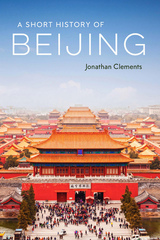
A Short History of Beijing
Jonathan Clements
Haus Publishing, 2022
A guide to the history of China’s capital, from before its rise to prominence as the seat of empires to the 2022 Winter Olympics.
Before China’s capital became a sprawling megacity and international center of business and culture, its fortunes fluctuated under a dozen dynasties. It has been a capital for several states, including those headed by Mongolian chiefs and the glorious Ming emperors, whose tombs can still be found on its outskirts. And before all that, it was a campsite for primitive hominids, known as the Peking Man. A Short History of Beijing tells the story of this remarkable city, from its more famous residents—Khubilai Khan, Marco Polo, and Chairman Mao—right up to the twenty-first century, as modern construction wiped out so much of the old city to make way for its twenty-million-strong population. Through his timely and intimate portrait of the world’s most populous capital city, Jonathan Clements reveals the history of China itself.
Before China’s capital became a sprawling megacity and international center of business and culture, its fortunes fluctuated under a dozen dynasties. It has been a capital for several states, including those headed by Mongolian chiefs and the glorious Ming emperors, whose tombs can still be found on its outskirts. And before all that, it was a campsite for primitive hominids, known as the Peking Man. A Short History of Beijing tells the story of this remarkable city, from its more famous residents—Khubilai Khan, Marco Polo, and Chairman Mao—right up to the twenty-first century, as modern construction wiped out so much of the old city to make way for its twenty-million-strong population. Through his timely and intimate portrait of the world’s most populous capital city, Jonathan Clements reveals the history of China itself.
[more]

A Short History of Finland
Jonathan Clements
Haus Publishing, 2022
A fascinating history of Finland from prehistoric times to the twenty-first century.
The modern nation of Finland is the heir to centuries of history, as a wilderness at the edge of early Europe, a borderland of the Swedish empire, and a Grand Duchy of tsarist Russia. And, as Jonathan Clements’s vivid, concise volume shows, it is a tale paved with oddities and excitements galore: from prehistoric reindeer herders to medieval barons, Christian martyrs to Viking queens, and, in the twentieth century, the war heroes who held off the Soviet Union against impossible odds.
Offering accounts of public artworks, literary giants, legends, folktales, and famous figures, Clements provides an indispensable portrait of this fascinating nation.
This updated edition includes expanded coverage on the Second World War, as well as new sections on Finns in America and Russia, the centenary of the republic, and Finland’s battle with COVID-19, right up to its historic application to join NATO.
The modern nation of Finland is the heir to centuries of history, as a wilderness at the edge of early Europe, a borderland of the Swedish empire, and a Grand Duchy of tsarist Russia. And, as Jonathan Clements’s vivid, concise volume shows, it is a tale paved with oddities and excitements galore: from prehistoric reindeer herders to medieval barons, Christian martyrs to Viking queens, and, in the twentieth century, the war heroes who held off the Soviet Union against impossible odds.
Offering accounts of public artworks, literary giants, legends, folktales, and famous figures, Clements provides an indispensable portrait of this fascinating nation.
This updated edition includes expanded coverage on the Second World War, as well as new sections on Finns in America and Russia, the centenary of the republic, and Finland’s battle with COVID-19, right up to its historic application to join NATO.
[more]

A Short History of Tokyo
Jonathan Clements
Haus Publishing, 2020
Tokyo, which in Japanese means the “Eastern Capital,” has only enjoyed that name and status for 150 years. Until the middle of the nineteenth century, the city that is now Tokyo was a sprawling fishing town by the bay named Edo. Earlier still, in the Middle Ages, it was Edojuku, an outpost overlooking farmlands. And thousands of years ago, its mudflats and marshes were home to elephants, deer, and marine life.
In this compact history, Jonathan Clements traces Tokyo’s fascinating story from the first forest clearances and the samurai wars to the hedonistic “floating world” of the last years of the Shogunate. He illuminates the Tokyo of the twentieth century with its destruction and redevelopment, boom and bust without forgoing the thousand years of history that have led to the Eastern Capital as we know it. Tokyo is so entwined with the history of Japan that it can be hard to separate them, and A Short History of Tokyo tells both the story of the city itself and offers insight into Tokyo’s position at the nexus of power and people that has made the city crucial to the events of the whole country.
In this compact history, Jonathan Clements traces Tokyo’s fascinating story from the first forest clearances and the samurai wars to the hedonistic “floating world” of the last years of the Shogunate. He illuminates the Tokyo of the twentieth century with its destruction and redevelopment, boom and bust without forgoing the thousand years of history that have led to the Eastern Capital as we know it. Tokyo is so entwined with the history of Japan that it can be hard to separate them, and A Short History of Tokyo tells both the story of the city itself and offers insight into Tokyo’s position at the nexus of power and people that has made the city crucial to the events of the whole country.
[more]
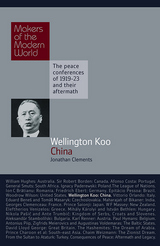
Wellington Koo
China
Jonathan Clements
Haus Publishing, 2010
Gu Weijun, a.k.a. Wellington Koo (1887-1985). Born in Shanghai and raised in the city's International Settlement, Koo became fluent in English during his postgraduate studies abroad - he got a PhD in Law from Columbia in 1912. He was recalled soon afterwards to become the English Secretary to the newly formed Republic of China, and became ambassador to the United States in 1915. He achieved notoriety at the Paris Peace Conference where he sternly resisted Japanese attempts to hold onto seized German colonial territory in mainland China. In protest at their treatment, the Chinese were the only delegates not to sign the subsequent Treaty of Versailles. Koo was China's first representative to the League of Nations, and ended up as acting president of Republican China during the unrest of the period 1926-7. He subsequently served briefly as a Foreign Minister during the peak of the Warlord Era, before returning to Europe, first as a delegate at the League of Nations, and then as China's ambassador to France. With the Nazi occupation, Koo fled to Britain, where he became the Chinese ambassador to the UK until 1946. A founder member of the United Nations, Koo was instrumental in maintaining the position of Republican China on the Security Council -by this time, 'Republican China' was limited solely to the island of Taiwan, while the Communists proclaimed themselves to be the new rulers of China itself. Retiring from the diplomatic service in 1956, the venerable Koo went on to become a judge at the International Court of Justice at the Hague, rising to vice-president before his retirement, aged 80, in 1967. He settled in New York, where his final years were tormented by 'Republican' China's loss of its seat on the United Nations Security Council to the Communists, following Nixon's famous visit to China.
[more]
READERS
Browse our collection.
PUBLISHERS
See BiblioVault's publisher services.
STUDENT SERVICES
Files for college accessibility offices.
UChicago Accessibility Resources
home | accessibility | search | about | contact us
BiblioVault ® 2001 - 2024
The University of Chicago Press









